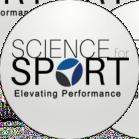

Study Details



Study Details
Prac�cal Takeaways from study
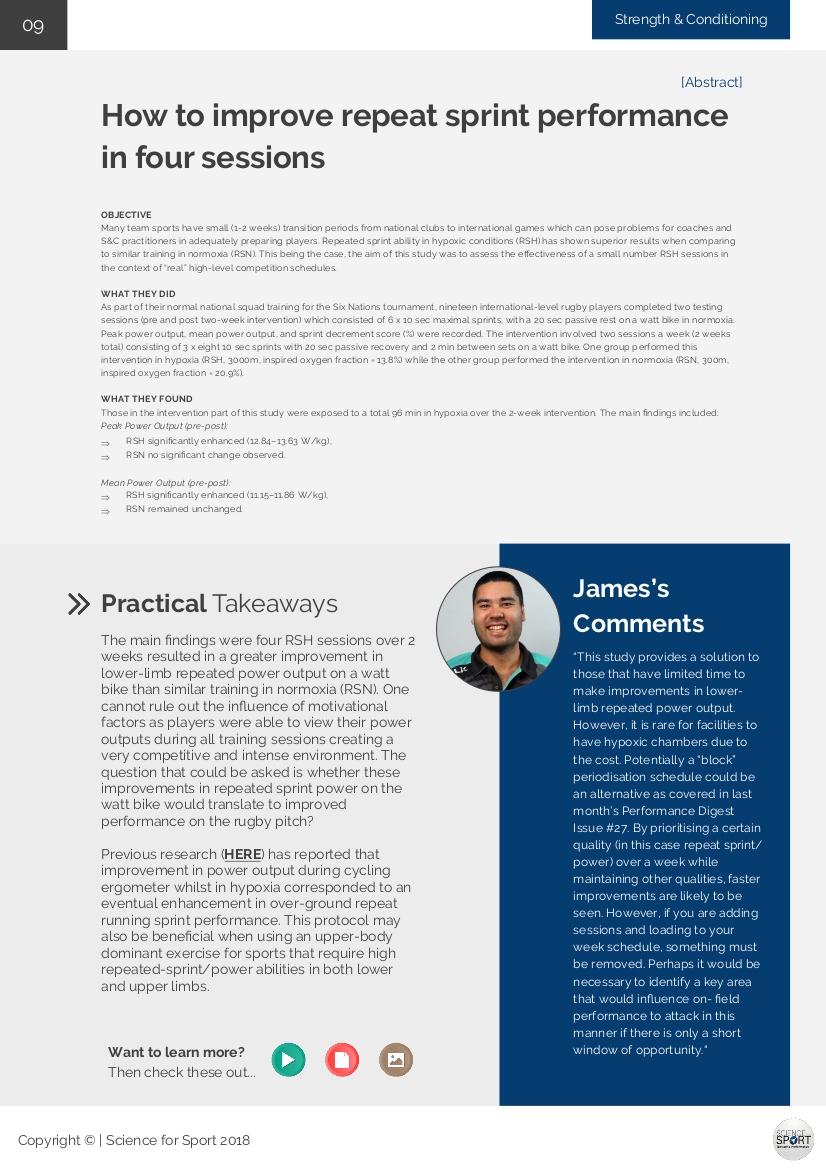
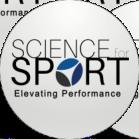
Related links to learn more about the topic
Reviewers comments on the st udy
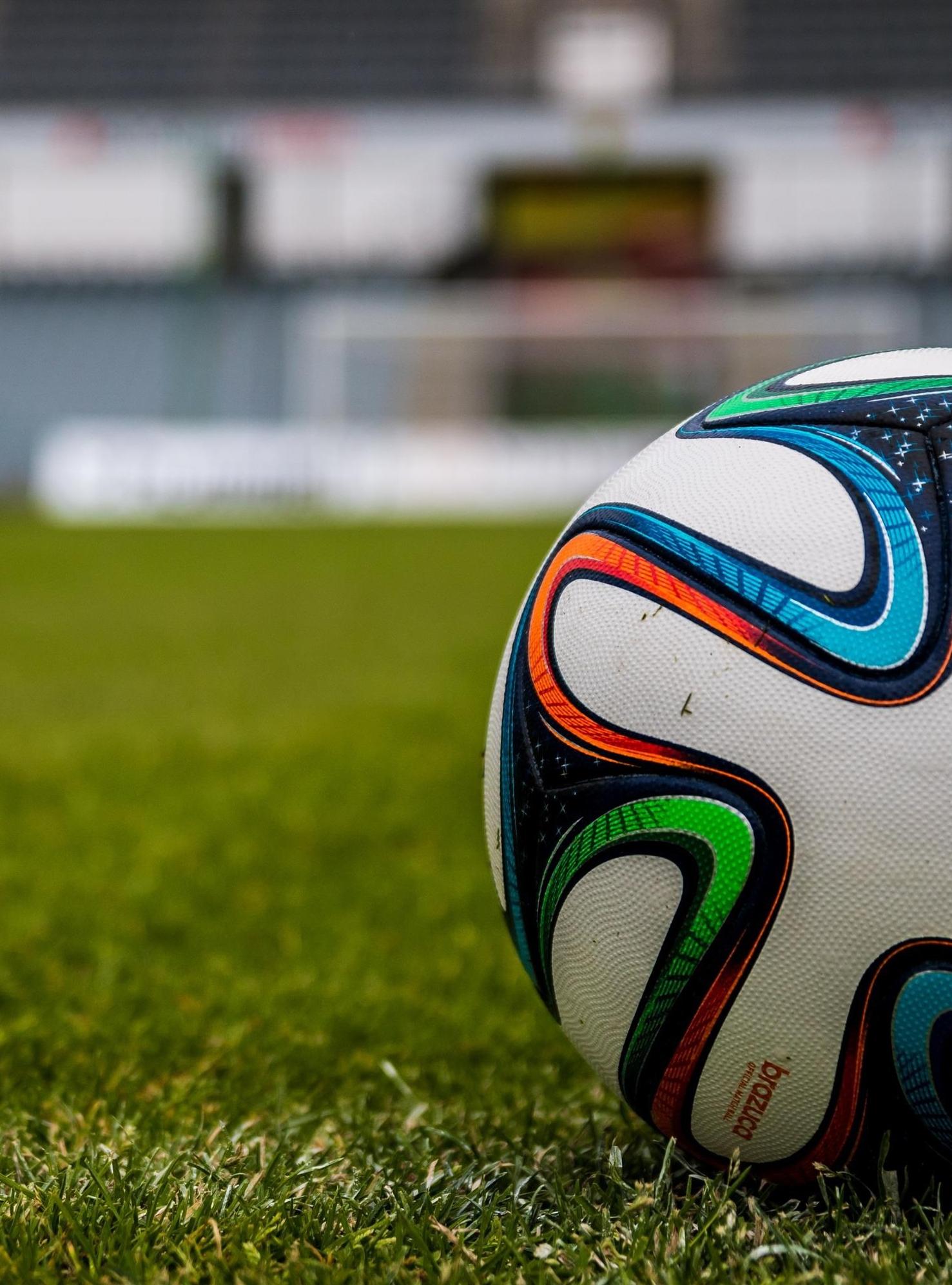
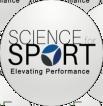

James is currently the Head Strength & Conditioning Coach for the Romanian Rugby Union. He has previously worked in America's professional rugby competition Major League Rugby with Austin Elite and the NZ Women’s National Rugby League Team. He is a published author and has completed a MSc in Sport & Exercise Science from AUT, Auckland, NZ.


Cody is a strength and conditioning coach and adjunct lecturer at the University of Iowa. He has an MSE in Exercise Science from the University of Kansas and also holds a CSCS from the NSCA.
Tom is the Head of Athletic Development at St Peters RC High School. He holds a Masters in S&C and has previously worked with West Bromwich Albion FC, Gloucester Rugby club, and Great Britain Equine. Tom is our youth research reviewer at Science for Sport.

James is a Performance Nutritionist for the English Football Association and works alongside the England national teams (men's and women's). He is also a SENr registered performance nutritionist and holds a PhD from Liverpool John Moores University.


Tom is currently an assistant professor in applied sports sciences and has worked in elite sport for over 10 years. Previous roles include working as a sports scientist at Liverpool FC, where he completed his PhD, and working across a number of other sports. He is passionate about physiology and has published papers on strength and conditioning, nutrition and youth development
Jordan is a Physical Therapist and Strength Coach who currently practices in a Sports & Orthopedic clinic in Bergen County, New Jersey. He is passionate about educating athletes on ways to optimize performance while decreasing the risk of injury.


Among other components, performance in soccer depends on an individual s competence to efficiently make decisions. These decisions can be divided into perceptual-cognitive and perceptual-motor skills, with both contributing to the development of sporting expertise. Perceptual-cognitive skills are considered to be what someone perceives and understands, while perceptual-motor skills refer to someone s ability to perceive and do through movement. In this context, decision-making can be defined as the ability of the performer to select and execute an appropriate action in a given situation.
In recent years, the study of perceptual-cognitive skills has received increasing attention in the field of talent identification and development in soccer, with studies showing the association of such components with game performance.

In this context, acquisition of superior decision-making skills in invasion sports (e.g., soccer, futsal and rugby) is associated with sport-specific experience (e.g., team practice, competition, and play activities) and the quality of the experiences players have had during their sports pathway
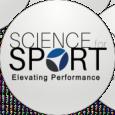
Considering the phases of sports development, the theoretical model known as the Development Model of Sport Participation (DMSP), has widely been used to help understand the process in different sports, including soccer. From this, recent research suggests the potential of engagement in futsal (an indoor version of soccer, composed of teams of four outfield players and a goalkeeper on a 20 × 40 m court) practice may contribute to soccer talent development.
This study looked to: (1) analyse whether elite Brazilian professional female soccer players with different levels of decision-making skills could be differentiated based on their engagement in various types and amounts of soccer activities during their development; (2) discuss what sport’s pathway in female soccer characterised the group with high decisionmaking skills.
77 Brazilian professional female soccer players (age 23.4 ± 4.2 yrs, experience in soccer 15.7 ± 4.7 yrs) participated in this study Players decision-making skills were assessed based on an objective video-based test – (TacticUP®). Scores in the test were used to create groups with high (HS) and low (LS) decision-making skills. In addition, The Participant History Questionnaire (PHQ), used in several studies, including studies with Brazilian youth samples, was used to measure the soccer activities undertaken by players.
This questionnaire allowed information on engagement in soccer developmental activities to be gathered. Five variables related to developmental sports activities, were assessed: (1) practice in soccer; (2) play in soccer; (3) percentage of time in play; (4) practice in futsal; (5) number of other sports. In addition to these variables the inclusion of a sixth variable was proposed. This comprised the time spent in soccer practice plus futsal practice, which was labelled “total practice”.
Comparisons between HS and LS groups for their developmental activities were carried out for three age periods:
(1) 6–12 years of age (i.e., childhood); (2) 13–15 years of age (i.e., early adolescence); and (3) 16–18 years of age (i.e., late adolescence).
Differences were found among HS and LS decision-making groups regarding their participation in developmental activities in every period assessed (childhood, early, and late adolescence).
In every period, the HS group accumulated more percentage time of their participation in soccer activities in practice compared to the LS group. Moreover, the HS group gathered more hours of practice in futsal and total practice (i.e., considering practice time in soccer and futsal) in early adolescence (13–15 years) compared to the LS group.



This study concluded that the specialised diversification pathway is the one that best characterises the sports involvement of better decision-makers during childhood. Specifically,
During childhood (6–12 years), involvement in a variety of contexts on the primary sport, such as play activities in soccer ( 1000 h on average), practice in soccer ( 650 h on average), and practice in futsal ( 500 h on average) were related to better decision-making skills in adulthood. This meant involvement in similar amounts of play activities ( 1000 h on average) and practice activities when soccer and futsal were combined ( 1100 h on average).
During early adolescence (13–15 years), a prevalence of practice activities in soccer ( 650 h on average) and futsal ( 500 h on average) compared to play activities ( 500 h on average) was related to better decision-making skills in adulthood. This meant more than twice the time spent in practice activities than play activities when combining soccer and futsal ( 1100 h on average).
The authors proposed that governing bodies and soccer stakeholders, may consider rethinking curricula throughout sports development based on these findings that contributes to the development of female soccer players with better decision-making skills.
Want to learn more?

Then check the se out...

“This interesting study suggests that through all stages of development a combination of play and competition of a chosen sport is important in helping to develop decisionmaking skills. Beyond that, the inclusion of similar sports to the target sport, such as futsal for soccer, in this example, would likely also be beneficial compared to the target sport (soccer) alone.”
“This study did not involve a control group, which makes it harder to be sure of these statements, but it does base its findings on highly skilled individuals. I would say that the evidence here, and that cited within the paper, suggests that diversification of sports contexts in the primary sport may help with better decision-making skills in adulthood.”
This month ’ s top research in strength & conditioning.

CAN YOU LEARN TO SENSE THE DEGREE OF OCCLUSION DURING BLOOD FLOW RE
VARIABLE RESISTANCE VS. TRADITIONAL COMPLEX TRAINING: WHICH IS BETTER?

USING A PARACHUTE FOR RESISTED SPRINT MIGHT IMPROVE YOUR SPEED AND HORIZ POWER.
IS THERE A VALID SOCCER GOALKEEPER-SPECIFIC AGILITY TEST THAT WE CAN USE?

Blood flow restriction, both used in isolation and in conjunction with load low exercise, has been found to result in favourable muscle adaptation. For those unable to undertake higher load exercise this can be a valuable alternative. Generally, restriction is achieved via use of an elasticated wrap or pneumatic cuff to the proximal part of the exercising limb. The aim of this is to reduce (but not occlude) arterial inflow while largely impeding venous outflow
Traditionally, most studies opt for pressures based on systolic blood pressure, limb circumference, or incorporate a universal pressure, which is maintained for all individuals. However, a more recent technique involves setting the pressure relative to that individual’s measured arterial occlusion pressure (AOP), which can account for individual differences, but using specialised equipment can restrict accessibility
Work started in 2013 looked to standardise pressures based on perceptual responses. This produced the perceived tightness scale, which involved subjects aiming for a “7,” on a 0–10 scale, because this would provide the supposed pressure needed to mimic ideal exercise blood flow restriction conditions.
This method produced a wide range of pressures between individuals (30–150% of AOP), as well as resulting in a wide range of applied pressures across time (i.e., poor reliability) within the same individual.
With these considerations in mind the purpose of this study was to determine whether subjects could be conditioned to a relative pressure and, more specifically, compare between 2 separate conditioning methods. A secondary purpose for this study was to determine whether using a narrower range of pressures surrounding the target pressure might allow for more effective conditioning.
Thirty-five subjects (20 males, 15 females, age: 24 ± 4 years, height: 170.5 ± 8.3 cm, body mass: 70.3 ± 12.0 kg, leg circumference: 59.0 ± 4.1 cm, unconstrained conditioning AOP: 145 mm Hg, and constrained conditioning AOP: 148 mm Hg) completed 4 visits, involving measurements for arterial occlusion and pressure estimations at 5 minutes and 24 hours after conditioning. Subjects visited the laboratory on 4 separate occasions. Visits 1 and 2, as well as visits 3 and 4, were separated by 24 hours. There was a 7-day separation between visits 1 and 3 and visits 2 and 4.

Participants lay on the laboratory table, with a 12-cm wide nylon cuff placed at the most proximal portion of the right leg before completing a 10-minute quiet rest period, after the AOP was determined within the right leg. AOP was considered the lowest applied pressure to occlude blood flow, indicated through the cessation of a pulse at the ankle.
On determination of AOP, a relative pressure (40% AOP) was calculated, and subjects were conditioned to this pressure using 1 of the 2 methods. More specifically, 1 method (constrained) involved transitioning to the target pressure, surrounded by pressures that were too high and too low, whereas the other method (unconstrained) involved only applying the target pressure by repeatedly turning the cuff on (12 seconds) and off (22 seconds). Conditioning methods were completed on visit 1 and visit 3 in a randomised and counterbalanced order
Immediately after AOP measurements, and while maintaining a supine position, subjects were conditioned to the target pressure (40% AOP), along with a pressure that was too high (50% AOP) and too low (30% AOP). This was completed by way of rolling transitions, beginning with the target pressure, increased to a pressure that was too high, decreased back down to the target pressure, continued down further to a pressure that was too low, and then increased back to the target pressure. Collectively, this pattern was repeated 5 consecutive times, with subjects being exposed to the target pressure 11 times and to pressures that were too high and too low 5 times each.
The unconstrained protocol involved exposing subjects to the target pressure for 12 seconds, at which point the cuff was deflated for 22 seconds, before being reinflated back to the target pressure. This process was repeated 11 times and equated to a conditioning time frame that matched the constrained protocol (approximately 6 minutes). There were 10 separate transitions around the target pressure when completing the constrained method, which equated to 220 seconds (i.e., 3 minutes 40 seconds).

After 5-minute rest, subjects attempted to match the target pressure. The researchers began with a very low pressure (5–10 mm Hg) and then gradually inflated the pressure in the cuff, at 2–3 mm Hg per second, until the subject felt that they were sensing the target pressure. The subjects could adjust the pressure if they thought it was too high or too low This was repeated 24 hours later


Conditioning methods produced similar levels of absolute error, indicating that either method may offer a viable means of pressure application. Most estimates were between 20 and 60% of arterial occlusion pressure. Additional conditioning sessions may be needed to narrow this range at the individual level.
Findings from this study provide evidence for what could potentially be a suitable means of pressure application among those using practical blood flow restriction. Both methods (unconstrained and constrained) had similar levels of error at the separate time points and therefore indicate that opting for a range of pressures during the conditioning stimulus is unnecessary because receiving the target pressure alone was equally effective.
Both conditioning methods resulted in similar absolute errors for pressure estimations at 5 minutes and 24 hours after conditioning. When comparing between methods at 5 minutes the unconstrained method slightly underestimated the target pressure, and the constrained model slightly overestimated the target pressure. When comparing within conditioning methods, there were similar error margins between 5 minutes and 24 hours after conditioning for both the unconstrained and constrained methods. The estimates of pressure at the individual level (limits of agreement) were relatively wide for each method, indicating that each method resulted in a range of relative AOPs (between 20 and 60% of resting AOP
“This is a really interesting study looking to make a useful tool easier to implement. Future research might consider pressure estimations beyond 24 hours, to gauge how long the effects of conditioning can be maintained”.
“The use of blood flow restriction training is becoming more common, especially in loadcompromised, injured, or rehabilitating athletes. This study is useful in suggesting a methodology that is potentially more usable, though there remains shortcomings in perceiving levels of occlusion. This is important when using restriction as overocclusion could be dangerous and under-occlusion limits the benefits from such training. I feel that in time blood flow restriction technology will continue to develop to provide a relatively low cost alternative that allows the desired benefits while removing much of the guesswork currently required by many”.

Maximum strength, power, and rate of force development (RFD) are crucial for success in rugby league, but regular strength training can be a challenge due to the multiple training modes and busy schedules of the athletes. Complex training, specifically contrast training, is a potential solution as it enables the combination of resistance and plyometric training in a single session (e.g. back squat superset with drop jumps). The training is based on post activation performance enhancement (PAPE), but this effect is inhibited by fatigue and requires an appropriate intra-contrast rest interval (ICRI). There is evidence that PAPE may be elicited with shorter ICRIs when a moderate load is combined with variable resistance (bands and chains), but no study has yet compared the effects of traditional complex training (TCT) and variable resistance complex training (VRCT) during a competitive season. Therefore, this study aimed to compare TCT and VRCT on physical performance.

Twenty-four male rugby league players (age 20-26 yr) were randomly assigned to either VRCT, TCT, or a control group. The training groups completed 6 weeks of 2 sessions per week with identical volume load. VRCT used a prescribed rest interval of 90 seconds between exercises and TCT used a prescribed rest interval of 4 minutes. The CON group did no intervention and instead continued normal sports training. Subjects completed 1 field session and 1 match per week during the study

The training program consisted of:
1. Trap bar deadlift + Drop jumps
2. Romanian deadlifts + pike jumps
Both interventions significantly improved 1RM back squat, CMJ peak power, and 5 m sprint time. VRCT resulted in significant improvements in RSI and leg stiffness in both legs, while TCT showed significant improvements in 10meter and 20-meter sprint times. Both TCT and VRCT had significantly greater 1RM back squats than the control group. Leg stiffness (right) was significantly greater for VRCT compared to the control group, while 20-meter sprint time was significantly greater for TCT compared to the control group. Any differences between TCT and VRCT were not clear
3.

During the trap bar deadlift, the TCT group dropped the bar at the top while the VRCT group performed the eccentric phase as quickly as possible. The TCT group used 93% of 1RM with a 4-minute rest within the complex, while the VRCT group used 70% of 1RM + 0-23% of 1RM from band resistance with a 90-second within complex rest.
Main lifts used 3 x 3 with plyometric exercise using 3 x 6. The following tests were performed before and after the intervention: 1RM back squat, countermovement jump (CMJ), drop jump off a 40 cm box (DJ), 20-m sprint, and unilateral vertical hop test. Peak power and reactive strength index (RSI) were calculated from the jumps, split times from the sprint, and leg stiffness calculated from the unilateral hop test.


Variable resistance may well be worth using for in-season rugby league players because of the reduced rest time between exercises and superior increase in RSI and leg stiffness. The advantages of variable resistance is the reduced loading in the bottom position and the continued acceleration throughout the lift. Traditional strength exercises force you to decelerate the bar as you reach the end of the concentric phase. Variable resistance allows you to accelerate to lockout increasing speed and power of the exercise.
Cycling TCT and VRCT is likely the most effective way to implement this. For example, using TCT during the early stages of pre-season and peaking leading into competition with VRCT Alternatively, using VRCT during congested match schedules to reduce time in the gym and absolute loading might be considered. Here s how you could use variable resistance within a training program of a rugby league player:
A1) Band Trap Bar Deadlift @70% 1RM w/ 10% band tension 3 x 4
A2) Drop Jumps 3 x 6
B1) Band Bench Press @70% 1RM w/ 10% band tension 3 x 3
B2) Incline Explosive Push-Up 3 x 5
C1) Chin-Up 3 x 6
D1) Neck
D2) Grip
D3) Abs
“It’s not lost on me that the VRCT group used the eccentric portion of the trap bar deadlift to rapidly reverse into a concentric action whereas the TCT group dropped the trap bar This is a strong stimulus to ignore as the use of elastic energy through the stretch shortening cycle improves our ability to rebound. Further, I would be wary of implementing the volume used in this study for lower body strength training. While it’s only 9 total sets of heavy strength exercises followed by 9 sets of plyometrics, it’s performed at very high intensities with exercises that promote extreme soreness.”
“Therefore, using a full body approach or choosing exercises on a lower body day that compliment each other are better options. While there is conjecture on the idea of PAPE being a phenomenon, complex training is a time effective method to attack force and velocity ends of the training spectrum.”
Improved sprinting is a critical goal of many athletes and coaches across sport. Sprinting speed directly correlates with horizontal force production leading to many resisted sprint training (RST) methods using relatively heavy loads to optimise these traits.
Often, the equipment used during RST can be expensive. This can be limiting for non-elite athletes looking to improve performance. To counter this, cheaper tools for sprint training purposes, such as the parachute have been considered. However, few studies have investigated the effects of structured parachute training protocols on running speed.
This study aimed to explore the effectiveness of a specific RST method using parachutes on parameters of sprinting performance and muscle power in a small group of sprinters.
Seven female recreational sprinters (mean age: 19 ±3 yrs) who had participated in track and field for five sports seasons and were free from injury were recruited for the study
The protocol included one session of parachute-resisted sprinting (PRS) during their training for six weeks. The parachute size was 0.54m2. During the PRS, the athletes sprinted for 30, 40, 60, and 80 m. Total training volume increased from 280 m in weeks 1 and 2 to ~450 m in weeks 3 to 6.
To test the effectiveness of the intervention, participants performed a test battery before (T0) and after (T1) six weeks of training. This included both a 30-m linear sprint (30-m LS) and a 60-m linear sprint (60-m LS), as well as a horizontal jump (HJ) test. Sprinting times were collected manually using a stopwatch.
There were differences between T0 and T1 from both 60m LS (8.70 ± 0.58s, 8.40 ± 0.40s) and HJ (1.98 ± 0.24m, 2.09 ± 0.19m) tests. No improvements were seen in the 30-m LS test. The effect-size was small for HJ, and moderate for 60m LS.
The rate of change (% Difference) was higher than the smallest worthwhile change (SWC) in all 3 tests: 30m LS (% Difference = 3.2, %SWC = 1.39), 60m LS (% Difference = 4.23, %SWC = 1.32) and HJ (% Difference = 5.4, %SWC = 2.39).



This study found using a parachute during resisted sprints led to improvements in sprint performance and lower limb power. Specifically, with regard to sprinting these results were evident over 60m distance, showing a greater effect on the non-acceleratory phase of running. This may be a result of the fact that the aerodynamic resistance of the parachute becomes higher as speed increases.
Conversely, traditional RST methods such as towing, are more effective in the acceleration phase. Although with regard to the 30m sprint distance, a small, statistically insignificant change was seen, previous research has shown an improvement on this type of distance. This could be due to a lower weekly training frequency in the presented study’s protocol. A benefit was also seen in horizontal jump performance, which is in line with previous research and shows potential benefit to athletes.
“This is an interesting preliminary study, which suggests that a more cost-effective RST method can improve both sprint performance and lower-limb power. It is interesting and potentially positive to see that one weekly session within the micro-cycle may be sufficient to elicit improvements in sprint performance as this may be considered not too burdensome to add into a current periodised plan.”


“As a preliminary study though it is useful to keep in mind that there was no control group used. This of course means that the participant’s regular training may have elicited similar results. Future studies should look to include a control to provide greater certainty as to the reason behind the improvements observed here.”

A soccer goalkeeper (GK) is a key defensive player in the most critical position when looking to prevent conceding a goal. While they will engage in low-intensity movements for the majority of a match, they are also required to defend their goal in critically defensive situations by performing short sprints and/or diving toward the ball as quickly as possible. When looking at assessing these skills most previous research has focused on quick movements (e.g., short straight sprinting and agility), and jumping and diving actions.
GKs have unsurprisingly been found to have greater jump and diving abilities compared to outfield players despite similar levels of physical skills, such as sprinting, underpinned by physiological characteristics including muscular strength.
When specifically assessing agility in GKs, typical tests (e.g., Illinois and 505 agility tests) are often used. On occasion researchers have focused on agility and diving performances of GKs in simulated practical game situations. There is insufficient evidence though on the practical ability-related fitness characteristics of GKs, especially for agility and diving movements in match scenarios.
The purpose of this study was to develop a reactive agility test with soccer GK-specific movements (G-RAT) and to examine the reliability and validity with college-aged Gks.
In most practical situations, when a GK is positioned at the middle of their goal, they are required to move in the lateral direction by approximately 3.7 m (one half of the width of the goal) and move in the forward direction by approximately 3–4 m (4 yards; over one-half of the length of the goal area).

Based on these typical movements when completing the GRAT, a turning point was positioned 3.5 m in front of the start line, and balls were placed on the tops of four branches at a 3.5 m distance from the turning point. Both side branches were set at 90 degree angles from the start line-to-turning point line, and both diagonal branches were set at 45 degree angles from the start line-to-turning point line. A call line for instructing directions was set up at a 1.5 m distance from the start line. A diagrammatic representation of the test can be seen below in Figure 1.
One test trial of G-RAT consisted of three shuttles from the start line to diving and ball catching on branches. Participants performed the test trials as fast as possible a total of two times with at least 3 min rest intervals. Participants were instructed to pass through the turning point during outbound and inbound actions. Researchers instructed on which ball to dive to visually observe when the participant’s trunk reached the call line. When participants were diving for balls during the tests, the GKs needed to fully grab the ball using both hands. A total of thirty-three male GKs competing in the 1st division of University Leagues in the Kanto and Kansai areas during the 2017–2018 seasons participated in the study
The total patterns for which ball to dive in the G-RAT setting were calculated, and the courses with duplication of same ball diving (e.g., A-B-A) were excluded from test settings. A total of 24 courses were obtained and randomly numbered, and those were used in the test trials.
Participants performed four fitness tests: (1) 20 m sprint, (2) countermovement jump with arm swing (CMJwA), (3) G-RAT, and (4) simulated G-RAT without diving. 20 m sprint and CMJwA was used to assess sprinting and jumping abilities of participants. All tests were performed twice in total.
Content validity was assessed by six experts with reliability assessed using intraclass correlation coefficient (ICC).




As an agility test for soccer GKs, five out of six experts assessed a score of 4; thus, the I-CVI of the G-RAT was calculated as 0.83. In secondary assessments, the I-CVI for the distance and diving movements of G-RAT was 0.83 (5/6) and 1.00 (6/6), respectively This was considered by the researchers to demonstrate a suitable level of content and convergent validity
The ICC value was 0.94 (95% confidence interval (95%CI), 0.88–0.97), considered to be ‘almost perfect’ The sensitivity measurement of G-RAT was described as ‘marginal with the smallest worthwhile change being larger than the SEM.
The GKs completed the test in 14.3 ± 0.7 and 15.3 ± 1.0 s in the R (those who played regular college football) and NR (those who were non-regular college football players) groups, respectively
The major findings of this study suggest that a GK-specific agility test under reactive conditions would have sufficient reliability and both content and convergent validity in college-aged Gks. From a practical standpoint, regularly evaluating the agility performance of GK with G-RAT would likely be useful for better understanding the proficiency of diving and recovery movements of GKs. It would also be useful for assessing the longer-term progress of GK-specific training programmes.

“Goalkeepers are a critical member of a soccer team, ensuring crucially that the ball stays out of the back of the net. Agility plays a crucial role in this, and it is apparent that typical agility tests are unlikely to specifically examine the type of agility GKs require. As such, it seems logical that a GK specific agility test is developed.”
“Although the ICC value of the G-RAT in this study was 0.94, the SEM value was larger than SWC. Despite this I still feel there is value in this test”.
“Based on the above levels of absolute reliability of the G-RAT, the authors suggested it appears that improvements to the test may still be required. Despite this I would propose that the G-RAT may be a good place to start when measuring this attribute. As with any test it is encouraged that you work out your own reliability in order to separate the signal from the noise in your own testing data. Considering acceptance that such a test is of value and with reasonable reliability and validity I would suggest starting here would likely be of interest to practitioners”.
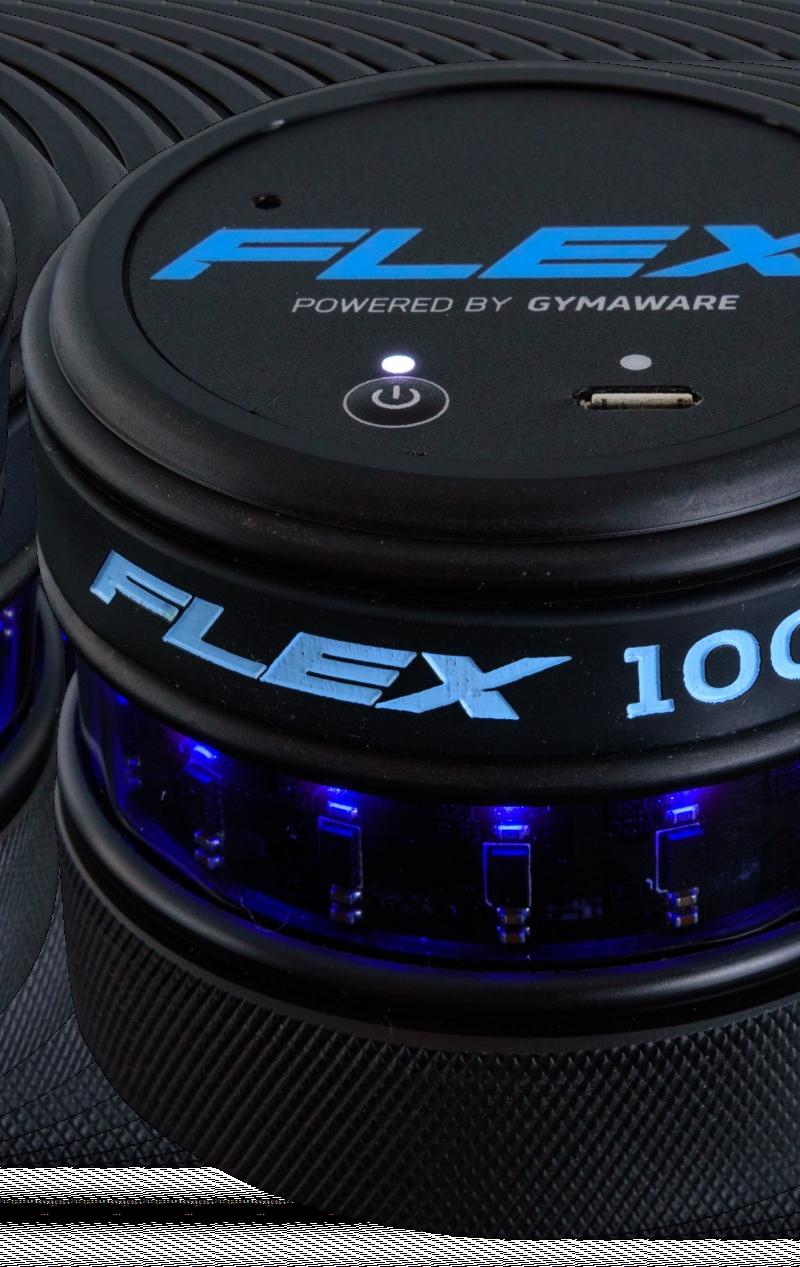
This month ’ s top research on technology and monitoring.
WHAT CONTEXTUAL FACTORS INFLUENCE MATCH PERFORMANCE IN WOMEN’S AFL?

HOW EFFECTIVE IS A PASSIVE HEAT ACCLIMATION PROTOCOL IN ELITE FEMALE ATHLETES?
VARIATIONS IN GOALKEEPER TRAINING LOAD AND THEIR RELATIONSHIPS WITH SUBJECTIVE REPORTS

When attempting to understand the demands of a sport and level of play, it is important for coaches to appreciate performance (physical outputs and technical proficiency), as well as the contextual factors that influence these outcomes during competition. Beyond simply the volume (e.g. total distance) and intensity (e.g. high-speed distance) of locomotion during competition, the context surrounding a match (e.g. match outcome, match importance, or opposition strength) can potentially influence these movements

This likely relationship between performance and match context is further specific to the level of play (e.g. elite vs. subelite). One such professional sport that is quickly gaining popularity is the Australian Football League Women’s (AFLW). Since beginning in February of 2017 with eight teams, the AFLW had expanded to 18 teams by 2022. Although research has provided samples of match demands (see ), there has HERE been no investigation around the contextual factors that influence the performance at the AFLW level. Therefore, the purpose of this study was to identify the relationship between particular context surrounding the match (e.g. match location, days between matches, opponent, or match margin) and various performance metrics (e.g. total or high-speed running distance, kicks, handballs, or defensive pressures) in AFLW competition.
Forty-nine AFLW players (age 24.4±5.3-yrs) from one team had match performances examined for 23 games, across three seasons (2017-2019). Players wore Catapult OptimEye S5 Global Positioning System units for all matches, capturing total distance (TD) covered (m) and high-speed (>4-m.sec-1) running (HSR) distance (m) for players that played >75-% of the total match duration (i.e. if a player played <75-% of a match that match data was excluded from analysis). To quantify technical performance, disposals (kicks and handballs), defensive pressure actions, and ranking points (a proprietary summary score of individual technical influences) were gathered for each match and individual. The contextual factors considered for each match included: location (matches played in Victoria or interstate), recovery time (‘short’ was less than 7-days, ‘long’ was considered more than 7-days), season (1, 2, or 3), opposition strength (based on final position for the season), and match margin (subtracting points scored from the team being researched, which created a loss to be a negative value). These factors were selected based on previous research of the men’s AFL league (see HERE).


Analysis was performed to identify the relationship and possible influence between a given match-specific contextual factor and the resultant TD, HSR, and technical performance for each player, as well as per position (forwards, midfielders, backs, and rucks).


This study provides specific reminders for coaches to manage fatigue and maximise readiness. Coaches can measure the success of this pursuit by comparing the TD and HSR values for away versus home matches, time of day, and even considering the number of days between matches. The hope is to have fairly consistent performance outputs, regardless of circumstances.
§ Given the day-of travel that the athletes in this study were experiencing, that could definitely influence readiness. Therefore, coaches should take steps to minimise the impact of travel and normalise a gameday routine for the athlete whether it be home or away Working to ensure a quality night’s sleep, and proper nutrition, hydration, and physical preparation (warm-up or treatments) prior to gametime.
§ The goal for coaches is to minimise the influence of match-specific variables and maximise psychophysiological readiness. This happens through establishing supportive habits, as well as having a level of flexibility in order to adapt to the changes in circumstances.
When coaches examine sport-specific research, it is critical that they consider the demands (e.g. volumes and speeds) relative to the level play As noted in this study when comparing to sub-elite athletes of the same sport, the demands are greater at the elite level (see ). This will ensure that HERE coaches are preparing and comparing appropriately

When examining technical performance via statistics, it is arguably best practice to view these metrics (e.g. disposals, pressures, ranking points) per minute, to normalise for playing time and opportunity This provides an accurate representation of the performance potential of players in a match.
Competitions that occurred interstate had lower TD and HSR per player
A relationship between total disposals and low HSR distance was noted, likely due to more congestion and involvement with the ball.
High-speed running distance increased across the three seasons, suggesting an improvement in the physical abilities of the AFLW team.
Ranking points accrued at a higher rate when there was a larger match margin.
The time to recovery between matches, the strength of the opponent, match margin, player ranking points, and defensive pressure actions did not have an impact on TD or HSR.
Then check the se out...
“There are two big reminders to keep in mind when considering the results of this research. First, correlation does not imply causation. It is highly unlikely that the circumstances of a match will be consistent, and variability is inevitable. However, controlling what can be controlled helps to optimise readiness and places a player and team in the best possible situation for success on match day. Likewise, these results are specific to the team examined and a result of the habits and routines that were established by those players across the three seasons. They are simply a reflection of those practices and do not determine what would be the case for all AFLW teams and athletes.”
“Lastly, as quantifying external loads is seemingly common practice with the prevalence of wearables, especially at the professional level, I think it is helpful to also compare statistics of performance as it relates to each player These are the quantified technical abilities of the player and a massive influence on the outcome of a match. A stark reminder to measure what matters as it relates to athlete performance.”
OBJECTIVE
Opportunities to help mitigate heat stress issues are often limited and impractical for athletes due to time and training demands. Given the opportunities to travel, train, and compete around the world, athletes can experience a fluctuation in climate and environmental temperature that can negatively impact performance. Heat acclimation (HA) is an artificial adaptive process that aids in an athlete s ability to regulate body temperature, manage heart rate, change blood volume, or increase sweat rate (see ). The acclimation process can HERE be further confounded in females that experience physiological variations due to the menstrual cycle and/or the use of contraceptives (e.g. change is thermoregulation and heat production, see ). Heat acclimation is different from heat HERE acclimatisation, which is a natural adaptive process based on the environmental conditions and frequent exposure.
However, there is a lack of specific research as it relates to females and HA protocols for team-sport athletes. Therefore, the objective of this study was to examine the female athleteresponse to a 10-day HA protocol, as well as to assess the ability to preserve any acute adaptations that occurred in the subsequent weeks.
Twelve female athletes (age 22±3-yrs) from an elite New Zealand rugby sevens team participated in this study. Data was collected regarding menstrual cycle status and use of contraception (natural, intrauterine device, or oral contraceptive pill) for comparison. Participants were exposed to a 10-day HA protocol during springtime conditions (environmental temperatures ~18°-C). The passive HA protocol involved limiting fluid consumption (permissive dehydration) during four sauna and four hot water immersion exposures. Sauna sessions (40°C, 80-% relative humidity) were 45-min long (10-min of standing, 15-min of sitting and analysing game-specific performance, 10-min of sitting and reflecting quietly, and 10min of standing) performed within 15-min of the end of an onfield training session. Hot water immersion sessions were done on non-training days, consisting of 45-min (25-min, arms submerged to chest, with the option to submerge to the stomach if they were ‘very uncomfortable for the final 20-min) in 40°-C water (allowing one �3-min break if needed, but omitting any cold exposure during that time). Water temperature, total heat exposure time, and session rating of thermal sensation (unbearably cold-to-unbearably hot) and thermal comfort (comfortable-to-extremely uncomfortable) were gathered for each of the hot water immersion sessions.
Heat stress tests were performed four times across this study (before the HA, three days after HA began, following the completion of 10-day HA, and 15-day after the end of HA), which consisted of a cycling session in a 35°-C chamber, relative humidity 80-%. Participants cycled at progressively fixed-rates (2-3-W.kg-1) during a 24-min warm-up, followed by a repeated intermittent sprint test (six repetitions of 24-sec at 3W.kg-1, followed by 6-sec of maximal sprinting, then 40-sec rest. A two-minute rest, and another set of six repetitions of the interval protocol described previously). Performance was measured based on the peak and mean power during the 6sec sprints. Additionally, heart rate, body temperature, body mass (towel dried to estimate sweat loss), as well as subjective perceptions (e.g. rating of perceived exertion (6-20-scale, see HERE), thermal sensation, and thirst) were measured following the heat stress tests for comparison. The change in results across the four heat stress tests was compared for changes and suggestion of influence from HA protocol.


The time course for heat acclimation is dependent upon initial training status. Research appears inconsistent regarding a need for longer windows of time (>10-days, see ); while other research HERE suggests that thermoregulation changes in as little as 5 days (see ). Although not tested in this study the HERE author’s noted the time necessary depends heavily on current training status.
After the initial commitment of time to help athletes acclimate to heat stress (5-10-days), dosing in an exposure once a week can help to maintain the initial adaptations experienced “top up” doses consistently (see ). When coaches know that athletes will be HERE experiencing high temperatures and humidity it is to their benefit to prepare them for this stressor
The relative wattage chosen for the cycling workouts (3 w.kg-1) was a calculated intensity based on the individual mean HR during maximal aerobic speed running (see ). Given the adaptations and HERE improvements, this intensity appears to be appropriate, and this method could be used for other coaches that are uncertain on intensity
§ Further, the two sets of six repetitions with 24-sec steady, 6-sec max sprint, 40-sec rest appears to be an adequate workload and mimics the intermittent intensity experienced in field sports (e.g. rugby or soccer). Coaches can use this protocol for athletes with limitations of performing on-field work (e.g. hamstring, ankle, or shoulder injury).

Most notably from a practical performance standpoint, the passive HA protocol was beneficial for peak power outputs during the cycling protocol. For elite athletes that were used to this type of workload, the heat stress exposures (sauna and hot water immersion) appear to be a novel stimulus that helped to improve their performance in this sort of environment and is something that coaches should consider included when applicable to prepare athletes for work at high temperatures (>35°-C) or humidity (>80-%).
Notably, especially the time in the sauna athletes can be encouraged to focus attention on analysing or visualising on-field performance, as well as simply taking advantage of mindfulness and meditation practice, which can have a beneficial impact on an athlete in training (see ).

Immediately following the 10-day HA protocol, there were notable changes in resting and submaximal body temperature (taken through the ear canal), but these changes were not preserved following 15-days without the supplemental heat stress.
Peak power output during the 6-sec bike sprint increased 3-days into the HA protocol and was maintained at the end of the HA protocol, and even 15days after completion of the HA protocol.
There was no meaningful change noted in sweat loss or heart rate during or following the HA protocol.
There was no difference recognized across contraceptive use based on physiology, perception, or performance metrics.

“Tactical and technical performance can quickly ‘go out the window’ when athletes are placed in environmental conditions that they are not used to, especially hot and humid conditions. It simply makes everything more stressful than it would otherwise be at average or indoor conditions. From a performance and safety standpoint, it is critical that coaches recognise the need to adapt athletes to the expected environmental conditions. As with any training stimulus, adaptation takes time (at least 5 days), but it is possible when dosed appropriately and the necessary time is given.”

“Although the HA protocol suggested is likely uncomfortable and somewhat challenging mentally and physically. It is also a passive activity that can be paired with other productive activities (e.g. game analysis or meditation). Coaches should consider opportunities to incorporate sauna or hot water immersion into their training plans when competing in hot environments is expected. As we saw from the results of this study, even athletes that are Olympic gold medallists and world champions in their sport can benefit from this specific work.”
“The final takeaway to appreciate is the need to continue a maintenance dose of the heat stress to retain the adaptations accomplished. Ultimately, in considering the demands of a sport and interventions to consider, environmental factors play a major role in guiding the preparatory process.”
Global Positioning System (GPS) devices have improved to be able to measure movements such as jumps, dives, and collisions (see or ). This offers coaches HERE HERE the opportunity to quantify the external training loads for a goalkeeper (GK), an integral playing position in soccer with alternatively specific demands compared to other playing positions on the field. Additionally, from a monitoring perspective the interaction between an athlete s subjective internal report (e.g. wellness, soreness, mood, fatigue) and objective external training loads (e.g. total distance, changes of direction, etc.) can help provide coaches with a better understanding of an athlete s response to a given training load.
However, there is limited research as it relates to subjective wellness reports based on playing position, as well as scarce insight as it relates to GKs external objective measures via GPS devices (e.g. traditional metrics such as total distance, player load and more modern ones such as dives, jumps, etc.). Therefore, the purpose of this study was to identify a potential relationship between subjective wellness reports and GK specific external training metrics, as well as highlight potential variations in wellness reports based on playing position in soccer (e.g. GKs, defenders, midfielders, etc.).
Thirty-four male English Premier League soccer players (age 27±4.3-yrs) participated in this study running for two and a half seasons (2019-2022), amassing 410 sessions (competitions or training) worth of data. Various playing positions were represented; GKs (n=7), central defenders (n=5), wide defenders (n=5), central midfielders (n=7), wide midfielders (n=5), and forwards (n=5). Participants completed a subjective wellness survey prior to each session rating fatigue, sleep quality, sleep quantity, muscle soreness, and mood (additionally these five values were summed to represent an overall ‘wellness’ metric). Additionally, players wore GPS devices to measure external training load (total distance), and GKs also had actions specific to their position measured for comparison (e.g. dives, average time to feet, ‘low’ <0.2-m, ‘medium’ 0.2-0.4-m, and ‘high >0.4-m jumps etc.).

The data were examined based on the match day plus/minus method for consistent comparison and context. Researchers compared external training load metrics based on these days (match day, match day plus one, match day minus one, etc.), as well as differences based on playing position. Additionally, wellness reports were compared across playing positions for variation and relationship to the external measures. Findings were presented, with special attention to the differences and relationships (between subjective internal and objective external data) for the GK position.


Given the lack of variation in subjective wellness reports across playing positions it is important to recognise that an athlete s subjective reports account for more than just training (e.g. life stress, opponent, match location, match outcome, etc., see HERE).
§ This was shown in the research, especially as it relates to starting and non-starting GK’s wellbeing report. The perception of wellness appears to vary just as much despite total distance accrued, which suggests the multifactorial nature of these subjective reports
When implementing a subjective questionnaire, familiarisation and understanding is critical. The participants in this study had at least 2-yrs of experience with a wellness questionnaire. Coaches need to be certain to explain the range (e.g. 1-5, worst to best) and the description of each. For example, a fatigue of ‘one’ would be extreme fatigue or exhaustion, but a ‘five would be high energy, zero fatigue. This understanding, paired with consistent use throughout the weeks and months is crucial for the information to be valid and reliable.
§ Further, in order to promote honesty from athletes, the information should be used in a supportive manner. Meaning that, when athletes report negative or challenging circumstances, they are handled with grace and understanding. If coaches use this information ‘against’ athletes, they may begin to withhold valuable insight that would help coaches better prescribe training.

Additionally, given the demands of the GK position, an alternative and specific approach to appreciating their training load activities (jumps, dives, etc.) is vital. The demands are much different than outfield players and the goals of training are less focused on a high volume of running and emphasis on cardiorespiratory fitness.
§ Likewise, noting that training session demands will likely be more physically taxing than match demands, with an importance placed on developing and maintaining explosive power in the lower body, GKs too need a tapering of workload heading into a match to maximise physical readiness.
§ However, although matches are less physically demanding, the psychological load and demand is very high, and coaches should prioritise the mental readiness of their GKs in addition to the physical readiness. This is where the subjective questionnaire plays an important role in monitoring psychological readiness.
Notably, taking advantage of GPS technology, jumps can be classified based on intensity. For example, this research classified ‘high intensity jumps’ as jumps that exceeded 0.4-m high. Ultimately, all jumps are not created equal, appreciating the intensity of such rather than just overall volume in a session is therefore an important step forward.
When examining the previous seven days worth of training load metrics, there was a ‘trivial to small’ relationship with subjective wellness reports.
However, when examining specific GK metrics and subjective reports, no significant relationships existed between:
§ Dive load and mood.

§ Time to feet and sleep quality or quantity

§ Low jumps and sleep quality
When examining the previous day's training load metrics, there was a ‘trivial to small’ relationship between total distance and subsequent wellness markers.
§ Additionally, PlayerLoad (derived from measures of instantaneous change in acceleration) and ‘high jumps had a ‘trivial to small’ association with fatigue, soreness, and overall wellness.
§ Lastly, ‘trivial to small’ relationships were found between total dives and soreness, time to feet, medium jumps and all wellness markers (except sleep quality).
However, there were no differences in subjective wellness reports based on position.
Given the lack of strength in relationships between subjective and objective metrics, any specific relationships or applied decisions is cautioned.
“From a training load monitoring standpoint, despite the different demands, GKs still need to have training and readiness measured and monitored. Given the unique demands (i.e., mental and physical stresses) these athletes require similar attention paying to their weekly training management. The aim of this is to maximise their psychophysiological readiness for match day This can only be accomplished through consistent monitoring of both external and internal variables.”
“It is important to recognise that demands differ between GKs and outfield players. Despite this the principles of identifying key training stressors (e.g. jumps, dives, multidirectional accelerations) and performance indicators (e.g. mental readiness, jumping ability, time to feet) remain. Too often, GKs are neglected in this regard. Given the difference a GK can have in the outcome of a game, it is important that coaches take the time to prepare and monitor these athletes with an approach that recognises their skills and significance.”
This month ’ s top research on youth development.
BASEBALL AND SHOULDER HEAL AN INVESTIGATION OF REPETITIVE THROWING IN YOUTH

THE IMPACT OF MATURATION ON CHANGE OF DIRECTION ASYMMETRIES IN YOUTH SOCCER
THE ROLE IS ISOMETRIC TRAINING IN YOUNG TENNIS PLAYERS. DOES IT WORK?


In the USA, approximately 500,000 students participate in baseball each year ( ). This is fantastic for youth, HERE given the physical and psychosocial health benefits associated with sport. However, previous research has found that specialising in one sport can be detrimental to health ( ). Moreover, specialising in baseball could HERE increase injury in the throwing arm due to the repeated and excessive exposure to continuous bouts of that action. Therefore, this study aimed to investigate what age students specialised in baseball and secondly, if they had experienced any throwing arm pain during college.
A total of 752 college baseball players were contacted through their institution. Of these, 294 participants (39%) competing at the National College Athletic Association in division 1, 2 and 3 participated in this study All participants were required to complete a custom-made questionnaire, consisting of a baseball and sport experience survey and a Kerlan-Jobe Orthopaedic Clinic (KJOC) Shoulder and Elbow Score questionnaire. This questionnaire is one of the most widely used validated clinical measures specific in the measurement of function in the shoulder and elbow in overhead athletes. An interactive version and printable report can be found . Information regarding specialisation HERE was gathered by asking questions surrounding sport history, utilising the protocol put forward by Jayanthi’s specialisation scale (HERE).



The main findings of this study indicated that sport specialisation in “throwing athletes” had little to no impact on long-term shoulder health. This is useful for coaches, as we are able to approach training with a more informed approach with their health at the forefront. Therefore, coaches working with youth can improve practice by following the steps below:
Athletes who participate in throwing-based sports benefit immensely from a programme which utilises exercises that create a more robust shoulder
However, before I allow my athletes to engage in overhead movements, they must become professionals at finding their “neutral hip position” ( ). For a generation that spends so much time on HERE their phones and consoles, the importance of this position is essential as it prevents excessive rounding of the lumbar and thoracic spine, ensuring that all overhead movements are performed optimally with the correct contributing musculature working sequentially. For older youth athletes (14-16yrs), this position may remove load (kg) from their exercises. However, the sacrifice in load will come with several benefits, Including a stronger kinetic chain, greater control in and around the hip and greater power generation at the shoulder
Once an athlete can understand where their pelvis is in relation to the rib cage, students should engage in both vertical and horizontal push and pull derivatives. Some great exercises to generate power include plyometric press-ups, medicine ball chest passes, and single-arm banded jabs. These are all examples of horizontal push exercises and are fantastic for creating power during throwing activities. To move overhead, I encourage athletes to understand the wall drill (HERE), before moving onto more advanced exercises such as
the single-arm dumbbell press or military press. This exercise is a fantastic addition to finding the “neutral pelvis”, as athletes appreciate the importance of a moving scapular through motion and strict control of the rhomboids. As athletes progress, the velocity at which they perform these exercises can also improve to encourage power generation. When working with athletes who engage in throwing-based activities, the repetitive nature of throwing can lead to injury ( ). Most of these injuries occur as a See attached podcast result of volume rather than sudden intense bursts.
Fortunately, the USA benefits from the “pitch smart” guidelines, which serves as guidance to the coach for how many throws a child should perform in respect to their chronological age per-session. Despite the host of challenges that come with this (i.e. some children are biologically older than others), these protocols are a great way for individuals to see if they are doing too little/too much and can act as a guide for other overhead sports such as cricket or volleyball. An example of these can be seen in the where coaches can click on their attached article respective age bands and plot accordingly
In this study, sport specialisation in youth had little to no impact on long-term throwing arm health in college baseball athletes.
Most participants in this study reported that they were never specialised throughout youth or high school. However, this changed at college level, where many reported high levels of specialisation in the questionnaire.
Despite low levels of total specialisation, this study did report that at certain stages of the participants playing career, 72.4% of them were “specialised” at some point of their youth or high school career but not throughout.


Coaches may wish to monitor players using the questionnaires attached to monitor levels of specialisation to avoid injury
“Despite the findings of this study showing that few players in this cohort were “specialised” early as baseball players, the authors note that that this may not paint an accurate picture of the landscape within baseball, where previous studies have found that a majority of baseball players do specialise early and are at an increased risk of injury ( and ). At face value, these HERE HERE findings are interpreted with a refreshing outlook, as these coaches are clearly doing something correct with their athletes in avoiding over exposure to a single sport. However, future studies may consider including questions within the methodology, which are open in nature and explore what youth are doing instead of their main sport to ensure that there isn’t a lack of physical activity in the off-season."
"In summary, coaches may wish to monitor their players on a session-by-session basis, drawing opinions and making plans from the health and wellbeing of the individual at hand. Where possible, coaches can use objective measures (e.g. countermovement jump height) as a measure of readiness, although this may not be specific enough for overhead athletes. To overcome this, a coach may wish to include a medicine ball granny toss for distance ( ) as a measure of shoulder HERE health, which again, may require further questioning if a deficit is present. These measures are useful for coaches who work with youth and want to gauge levels of fatigue prior to an excessive bout of fixtures."

Change of direction (COD) is defined as the ability to change initial direction to a predetermined location and/or space on a field or court. In many sports, this quality is essential in tracking, evading and moving around the opposition. In soccer the importance of COD is better understood through watching the game, where a high level of COD ability has been linked to decisive moments within the sport Therefore, players with (HERE). a COD asymmetry (e.g. preference or ability to move on one side better than the other) are at an increased risk of poor decision-making and injury. Moreover, the process of maturation has previously been found to increase the likelihood of establishing an interlimb asymmetry (HERE). Therefore, the aim of this study was to quantify the effects of maturation on COD asymmetry in young soccer players.
Seventy-six young soccer players aged between 10-16 years were split into two groups based on maturity offset, which is a measure that represents how far away an individual is from peak height velocity (PHV). Participants were divided into either the pre-PHV group (n = 45) or a post-PHV group (n = 31). COD scores were collected using the novel 505 test ) on both the (HERE dominant and non-dominant leg. COD deficit (CODD) was also collected. This measure is important to effectively distinguish COD ability from acceleration and linear speed, as typically, faster athletes present better COD times as a result of their sprint speed and not COD ability Therefore, the CODD assessment is used to purely observe the change of direction element of the test in the absence of athletic speed. Once collected, the research team performed both 505 asymmetry index and CODD asymmetry index measures by dividing the dominant by the non-dominant leg and multiplying this by 100 to calculate the percent difference. Such measures were important to analyse the impact of maturation on COD performance.


In my opinion, coaches need to be aware of the impact of maturation on asymmetry in the knowledge that these develop long before athletes reach PHV As a result of this, coaches are best placed to tackle this by ensuring that they complete:
Regular testing can be an effective way of monitoring asymmetry and tracking changes in muscular performance between-limbs. Some common tests recommended to assess asymmetry are both the countermovement and broad jump, followed by bilateral and unilateral variations of an isometric midthigh pull ( ). An example of the protocol for the HERE mid-thigh pull can be seen in the attached video. In addition, Dos Santos and colleagues (HERE) recommend creating asymmetry thresholds using the following formula to highlight individuals who have small-moderate, or high to extreme asymmetries. Ideally, you should wish to have minimal asymmetries between legs, with a difference of <10% to be commonly acceptable ( ). If present, coaches may HERE wish to change the programme that an athlete is following in order to reduce this.
If present, asymmetries possess the ability to create injury or further increase imbalances. Given that imbalances were present in this study prior to PHV, coaches and teachers can play a vital part in reducing these. Unilateral derivatives of any movement are a fantastic way to reduce imbalances as suggested in the attached article. For example, single-leg assisted pistol squats, single-leg Romanian deadlifts and single-leg jumping may be effective exercises to use with athletes. These are fantastic additions into any session and could be performed between 10-12
quality repetitions. In addition, Maloney found that a reduction in asymmetry was often associated with strength ( ). Therefore, the old adage that getting stronger HERE reduces injury was confirmed in this study
As well as working on asymmetries in the gym, coaches may wish to explore options that can be used during skill training to help as well. For example, overloading a scenario in football where athletes continually take off and receive the ball on one leg or from one direction will continue to exacerbate a movement bias. In an ideal world, coaches would “count” repetitions of certain drills to ensure that the same could be performed on the opposite side/leg. However, allocating time slots or having lots of equipment available (e.g. a number of footballs) prevents time spent doing nothing and improves the intensity of training. In turn, the coach can roughly estimate that the same workload has been experienced on both limbs, which in theory should help to prevent asymmetries.
The main finding of this study was that after analysis of the asymmetry and CODD index measurements, the researchers found no difference between the pre-PHV and post-PHV groups.
However, significant interlimb asymmetries were detected between the dominant and non-dominant legs in both the CODD and 505 tests. The asymmetry thresholds were defined as 23.98% for the 505 test and 28.99% for CODD
Asymmetry values ranged extensively in both the pre- and post-PHV groups, indicating that asymmetries in young soccer players develop long before PHV Any asymmetry greater than 10% between limbs was deemed as above average.
In summary, biological maturation does not impact CODD or asymmetry index in young soccer players. However, there appears to be a large directional dominance present in this sport.
"In consideration of the findings of this paper, it would appear that asymmetries are prevalent and may be developed from a very young age. The unilateral nature of football may lend to this, with further training and competition exacerbating this imbalance. This may lead to complications in later life, where asymmetries contribute to injury or movement patterns that are disadvantageous (e.g. a player performs a drop step with a right sided bias when a left would be preferable or more advantageous)."
"When discussing asymmetries, the name Dr Chris Bishop is quite often synonymous. In the attached podcast, Dr Chris presents a plethora of research investigating the role of asymmetry in athletic function and ability Within this domain, Dr Chris echoes the importance of training to reduce asymmetries, drawing attention to the tests available in the practical takeaway’s sections. In addition, Dr Chris highlights some of the methods utilised to reduce asymmetry, and its importance to both a sports and daily context. In my opinion, reducing asymmetry is essential in youth to allow them as adults to access movements from multiple directions with equal opportunity both in a sporting and everyday context."




In tennis, the ability to serve at high velocities is believed to be a prerequisite for participation at an elite level. Therefore, players wishing to transition from youth to senior competition must be exposed to a series of strength, power, and skills training that enhances serving technique. In previous years, research has explored the benefits of strength training, plyometric training and power training on serving velocity ( & HERE HERE). However, few studies have investigated the role of isometric strength training (IST) on serve performance despite this method being reportedly beneficial in other sports (e.g. football).
Therefore, the aim of this study was to investigate the impact of IST as a training method in youth tennis players on serve velocity, accuracy and force-time variables.
Sixteen competitive tennis players (~15 yrs) participated within this study. Of these participants, 10 were assigned to an intervention group whilst 6 were assigned to a control group. To evaluate the impact of IST, the intervention group received IST before regular training. The control group trained as normal.
All participants were assessed on joint-specific function (e.g. shoulder internal rotation and shoulder flexion) with a strain gauge, coupled with serve performance and accuracy variables. These were measured using a hand-held radar gun, with only accurate serves being accounted for at all stages of testing. In addition to these, rate of force development, impulse and maximal voluntary isometric contraction were collected with a BOSCO Chronojump system.
All measures were collected before, during (week 3) and after the intervention. The intervention group performed 2 maximal isometric exercises designed to challenge key positions in the shoulder which are vital in tennis. Participants were asked to work “as fast and as hard as possible” for 1-5 seconds in the dominant extremity Time under isometric contraction progressed from 60-80s a week (weeks 1-3) to 100-150s from weeks 4-6.


In youth, IST can be a fantastic way for athletes to understand the desirable positions, such as the bottom of a squat, where they may otherwise not spend much time. IST are not only safe, but require little to no equipment and pose little neuromuscular fatigue when compared to concentric and eccentric muscle actions ( ). This is important in tennis, as HERE repetitive serving can be tiring and increase the chance of injury. In comparison, IST can support an athlete in holding key overhead positions common to the tennis serve, which could be added in rest periods or near the end of a session to reinforce key messages (e.g. fully extend through the tennis serve) as a session takeaway
In my experience, IST holds a bit of a tedious connotation when working with youth. I understand this. Endless holds aren’t exactly “fun” … or are they? In an attempt to incorporate isometric activities in my sessions, I created an IST leader board in the gym. For common movements (e.g. active hangs), I could easily get another 10-15 seconds per repetition when adding an element of competition to their sessions. For example, in the active hang, points were awarded for holding for 10, 10-20, and 20-25s. At the end of the session, participants collated their points for an overall score. This is a great way to add some variety to sessions and can be used to promote recovery. Some great additions to the active hang can be found in the attached article
IST is not only useful at supporting players to speed up, but also to decelerate. This is important, as effective deceleration is a determinant of success in tennis. The upper body for example, must decelerate the powerful actions of serves, groundstrokes and volleys using the major muscles of the upper back and posterior aspects of the shoulder To support this, coaches must consider IST as a vital component of a competitive tennis player’s training routine to achieve peak tennis performance. To start with, holding isometric pushes against a wall or the top of a press-up could be simple ways to introduce IST to tennis players. This could then be progressed onto single-arm variations and the prone shoulder exercises found HERE.
The present study found that adding a 6-week upper-limb specific IST programme to regular training was effective at improving force.
Secondly, improvements in serve velocity were experienced by participants with no impact on serving accuracy
Improvements in serve velocity were associated with improvements in shoulder-joint-force time curve increases, highlighting the positive impact that isometric training can have on rate of force development.
Although some minor changes were observed at the 3-week mark, the majority of the essential changes to shoulder internal rotation, rate of force development, shoulder flexion and impulse occurred between weeks 3-6.
"The present study found that adding 6-weeks of upper-limb specific IST was effective at improving force, serve velocity and accuracy in youth. All of these are important for the youth tennis player However, the study offers coaches a limited array of exercises to put into practice. To support coaches, the attached video is a fantastic way to familiarise yourself with some of the ways that coaches can target the shoulders for tennis players and could progress a session over time."
"Considering that tennis players have large travel commitments and an extensive competition calendar, IST could be a time efficient way of accessing both neuromuscular and functional adaptations in the muscle, where limited space or equipment (e.g. hotels) may not be present. In addition, IST programmes are not as fatiguing as other programmes (e.g. compared to a typical total body programme with both concentric and eccentric muscles actions). As a result of this, coaches may wish to incorporate IST as this would have little to no impact on technical performance."
"If you are training a youth tennis player and are struggling to balance the multiple plates of a complete athletic programme, S&C coach James Shapiro provides some excellent guidance for coaches in the attached podcast. In the podcast, coach Shapiro provides a canvas of challenges that the modern S&C coach may face, coupled with practical, but well-researched solutions to these problems."



This month ’ s top research on nutrition
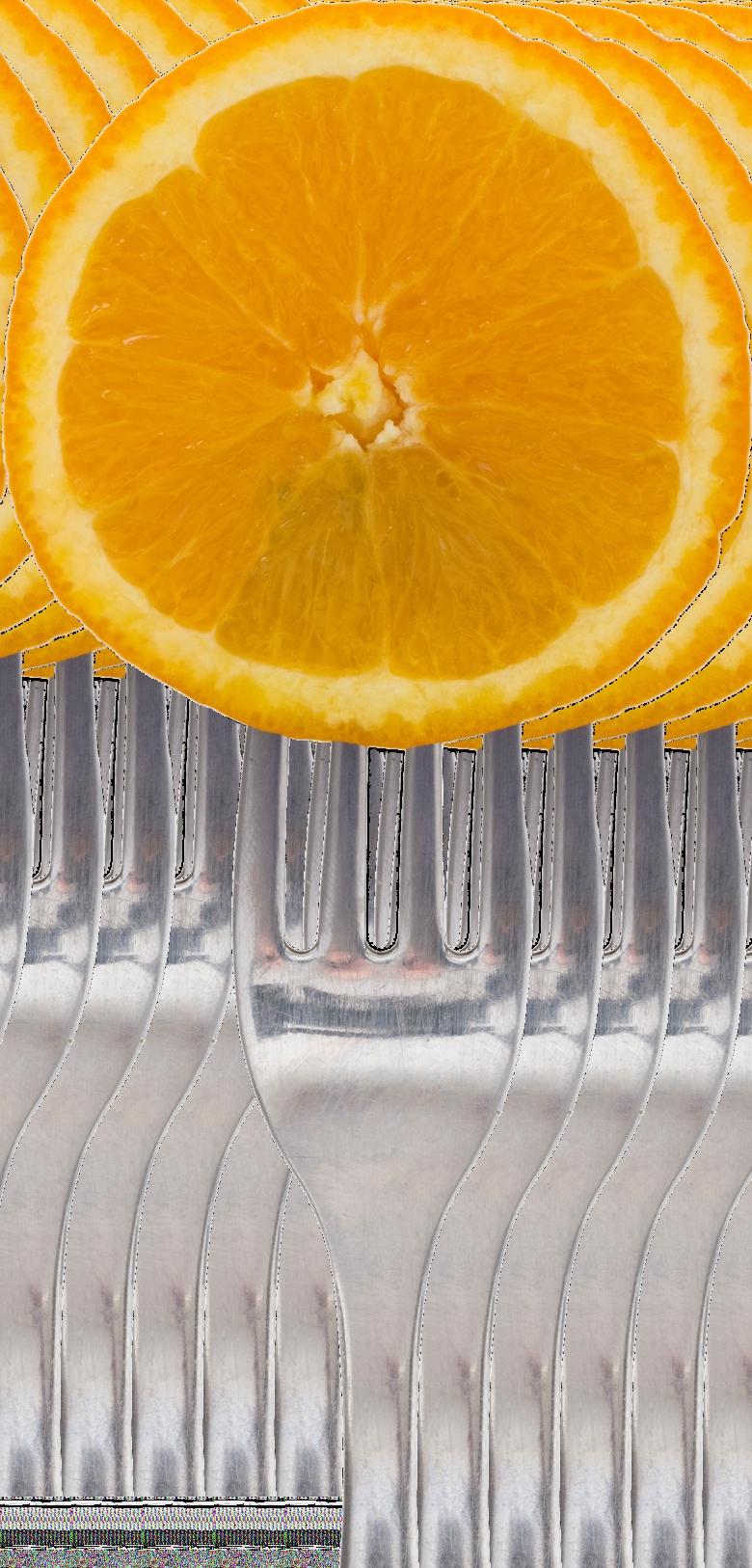

VITAMIN D3 SUPPLEMENTATION AND BONE FRACTURE RISK
HOW TO MEASURE THE ENERGY COST OF RUGBY LEAGUE IN YOUNG PLAYERS: DOUBLY LABELLED WATER VS ISOLATED & COMBINED WEARABLE TECHNOLOGY
ORAL CONTRACEPTIVE USE ATTENUATES MUSCLE GAINS AND FAT LOSSES IN HEALTHY, ACTIVE WOMEN
What is vitamin D3?
Vitamin D, a fat-soluble nutrient, is absorbed in the intestines and stored within body fat and liver This vitamin exists in two varieties - D3 and D2 - but even though they are similar in nature, D3 contains an altered chemical structure, which attaches to a specific vitamin D binding protein more efficiently As a result of this different make-up, it is able to more efficiently increase the body's vitamin D status.
How is vitamin D3 produced?
Vitamin D3 is produced within the body when our skin is exposed to sunlight. This involves the absorption of a particular type of ultraviolet radiation (UVB) in the bottom layers of the epidermis that converts 7-dehydrocholesterol into vitamin D3. Before becoming active, vitamin D3 needs to be further modified by our liver and then by our kidneys.
What affects vitamin D3 levels?
UVB radiation is responsible for 90% of vitamin D3 synthesis in the human body, however sunscreen use, season, altitude, latitude, time of day and air pollution can all inhibit absorption. Even when produced naturally within the body it still needs to be replenished from external sources like dietary supplements, drugs, or foods. Vitamin D3 has a particularly high concentration in animal-derived products such as fish, offal, egg yolks and butter. Modifiable risk factors such as obesity, smoking cigarettes, and poor eating habits can also reduce vitamin D3 status. Female gender has been linked with lower levels of vitamin D3, possibly due to increased amounts of fat tissue leading to reduced circulation levels. Darker skin colour also inhibits vitamin D3 absorption due to increased levels of melatonin.
What does vitamin D3 do?
Vitamin D3 is essential in maintaining levels of phosphorus and calcium. It stimulates the absorption of these two minerals from the intestine, regulates calcium turnover within bones, and supports the renal absorption of calcium back into the blood. It further inhibits the synthesis and secretion of parathyroid hormones, which in high levels, can induce excessive bone turnover resulting in mineralisation defects and ultimately causing conditions like rickets and osteomalacia. By modulating these levels in balance, vitamin D3 keeps phosphorus and calcium from harm’s way so that mineralisation may continue to support healthy bones.
How much vitamin D3?
According to The Royal Osteoporosis Society and other Vitamin D Guidelines Summaries, serum vitamin D3 levels greater than 50 nmol/L (>20 ng/mL) are deemed adequate for most of the population. Serum levels under this value are considered a vitamin D3 deficiency To maintain a healthy musculoskeletal system among adults, consumption of vitamin D3 should be between 400 and 2000 IU/day. However, this can vary according to an individual's health status, age, body weight, living location and diet.
Research showing the benefits of vitamin D3 on human health is an expanding area of study This review attempts to map the existing evidence on the effect of vitamin D supplementation on the risk of different fractures and its impact on recovery

The authors of this review article introduced vitamin D3 and explained the importance of it for general health. The review was then broken down into the following topic areas:
1. Fracture risk assessment and Vitamin D3 status guidelines
2. Vertebral fractures
3. Hip fractures
4. Stress fractures
5. Paediatric fractures
6. Conclusions
Fracture Risk
In the human body, bone mass generally peaks in adults aged 25-30. As we move closer to 40 (years of age), a natural decrease in bone mineral density can start to occur leading to primary osteoporosis. Secondary osteoporosis may be caused by several issues including endocrine disturbances, chronic inflammatory conditions, cancer treatment, alcohol abuse and other related issues. After fifty years of age, it is estimated that 20% of men and 50% of women experience low-energy fractures due to weakened bones. The postmenopausal period of women’s lives accelerates bone tissue loss due to oestrogens deficiency, which explains the above mentioned difference of fracture occurrences between the sexes. Thus, these several factors amplify the likelihood for more fractures.
Vertebral Fractures
Vertebral fractures (VF) are one of the most common osteoporotic injuries, with prevalence escalating with age. Statistics show that 19% of women and 20% of men over the age of 70 suffer from VF This condition can compromise health-related quality of life and in some cases, increase mortality rates. Early prevention of that type of fracture seems to be a reasonable strategy, especially if vitamin D and calcium supplementation are estimated as a low-cost intervention.
Observational studies measuring serum vitamin D status and risk of VF show a significant correlation in older adults around the world. Conclusions agree that serum vitamin D levels below 70-75 nmol/L represents a significant risk factor for incidence and severity of VF. However, experimental studies do not provide a similar conclusion. Several meta-analyses compared the preventive effects of vitamin D alone (300-800 IU), calcium alone and the combination of vitamin D, and calcium versus a placebo, but no intervention reduced the risk of VF
What is vitamin D3?
Vitamin D, a fat-soluble nutrient, is absorbed in the intestines and stored within body fat and liver This vitamin exists in two varieties - D3 and D2 - but even though they are similar in nature, D3 contains an altered chemical structure, which attaches to a specific vitamin D binding protein more efficiently As a result of this different make-up, it is able to more efficiently increase the body's vitamin D status.
How is vitamin D3 produced?
Vitamin D3 is produced within the body when our skin is exposed to sunlight. This involves the absorption of a particular type of ultraviolet radiation (UVB) in the bottom layers of the epidermis that converts 7-dehydrocholesterol into vitamin D3. Before becoming active, vitamin D3 needs to be further modified by our liver and then by our kidneys.
What affects vitamin D3 levels?
UVB radiation is responsible for 90% of vitamin D3 synthesis in the human body, however sunscreen use, season, altitude, latitude, time of day and air pollution can all inhibit absorption. Even when produced naturally within the body it still needs to be replenished from external sources like dietary supplements, drugs, or foods. Vitamin D3 has a particularly high concentration in animal-derived products such as fish, offal, egg yolks and butter. Modifiable risk factors such as obesity, smoking cigarettes, and poor eating habits can also reduce vitamin D3 status. Female gender has been linked with lower levels of vitamin D3, possibly due to increased amounts of fat tissue leading to reduced circulation levels. Darker skin colour also inhibits vitamin D3 absorption due to increased levels of melatonin.
What does vitamin D3 do?
Vitamin D3 is essential in maintaining levels of phosphorus and calcium. It stimulates the absorption of these two minerals from the intestine, regulates calcium turnover within bones, and supports the renal absorption of calcium back into the blood. It further inhibits the synthesis and secretion of parathyroid hormones, which in high levels, can induce excessive bone turnover resulting in mineralisation defects and ultimately causing conditions like rickets and osteomalacia. By modulating these levels in balance, vitamin D3 keeps phosphorus and calcium from harm’s way so that mineralisation may continue to support healthy bones.
How much vitamin D3?
According to The Royal Osteoporosis Society and other Vitamin D Guidelines Summaries, serum vitamin D3 levels greater than 50 nmol/L (>20 ng/mL) are deemed adequate for most of the population. Serum levels under this value are considered a vitamin D3 deficiency To maintain a healthy musculoskeletal system among adults, consumption of vitamin D3 should be between 400 and 2000 IU/day. However, this can vary according to an individual's health status, age, body weight, living location and diet.
Research showing the benefits of vitamin D3 on human health is an expanding area of study This review attempts to map the existing evidence on the effect of vitamin D supplementation on the risk of different fractures and its impact on recovery




A semi-regular assessment of serum vitamin D3 is even more beneficial to quickly rectifying any deficits and acutely adjust plans. For example, vitamin D3 serum levels could be tested before pre-season, start of competitive season, after Christmas and spring (March/April) to support winter athletes (e.g football or rugby).


If testing is not an option, then evaluating the individuals risk factors for vitamin D3 deficiency is the next best option. For example, with the athletes I am currently working with, supporting general bone health and diminishing chances of stress fracture are priorities when considering vitamin D3 supplementation, especially due to the UK's decreased sunlight exposure during wintertime. Therefore, supplementing athletes with vitamin D3 is appropriate. Many multivitamins now contain 1,000-4,000 international units of VitD3 so it is important to check the labels of your products.

Incidences of hip, vertebrae, and stress fractures all had significant associated with deficient vitamin D3 levels. Groups associated with higher incidences of these fractures include military recruits, athletes, older adults (aged 50+), post-menopausal women, those with bone or inflammatory conditions, and individuals with poor lifestyle (poor nutrition, smoking, drug use, and little exercise). Therefore, it is reasonable to conclude that supplementing these populations with vitamin D3 is likely appropriate.
Before recommending supplements, the food first approach should be recommended. Ensuring that individuals are eating a varied high-quality whole food diet with adequate amounts of fish, eggs and dairy products can help support vitamin D3 deficiency
Then check the se out...

There have been many links between low vitamin D3 serum levels and bone health, asthma, cardiovascular conditions, cancer, poor immune responses, muscle function and oral health. Sport nutritionists often complete a cost benefit analysis before supplementing an athlete. This includes three main sections:
§ Assess the need: If an individual falls within an ‘at risk’ category, then there is a need to supplement a potential vitamin D3 deficiency This is better determined by measuring vitamin D3 levels with a blood test.
§ Assess the risk: There are no known risks supplementing with category 400-2000 IU/day of vitamin D3 over the course of a few months e.g over winter and spring.
§ Assess the consequence: The consequence of supplementing with vitamin D3, as concluded by this review, would support hip, vertebrae, and stress fracture risk.
This concludes that there are significant benefits to supplementing individuals at risk of vitamin D3 deficiency to support hip, vertebrae, and stress fracture risk. VitD3 supplementation can be taken via tablets, oral sprays and jellies depending on athlete preference.
My advice, where possible, would be to always have the discussion with a medical professional at your organisation or the GP of your athlete to ensure you are in agreement with the plan of action.
OBJECTIVE
To effectively manipulate energy balance, it is first important to accurately measure an athlete s total energy expenditure (TEE). In rugby, the energy demands of the sport are high due to the energy cost of collisions and can vary depending on the stage of the season, age group, playing position, and individual characteristics. To provide individualised dietary advice, practitioners need a reliable and accessible method of measuring total energy expenditure to maximise a rugby player’s health, development, and performance goals.
Direct calorimetry, indirect calorimetry, and the doubly labelled water (DLW) method are ‘gold standard’ approaches to accurately measure TEE, but these methods are costly Wearable technology, such as heartrate monitors and motion sensors, could be a convenient, budget-friendly, non-invasive, and versatile way of measuring TEE in athletes within everyday applied practice. Additionally, combining multiple technologies has been suggested to be more accurate by decreasing the influence of any single device's limitations.
An example of such a wearable technology is the SenseWear Pro3 Armband, which is a multi-parameter monitor that measures energy expenditure. However, it is reported to have poor accuracy when measuring very high intensity activities. An alternative tool to evaluate TEE is metabolic power, which is designed to measure the energy cost of intense activities such as accelerations and decelerations in team sports. Combining both technologies could result in a more accurate and practical assessment of TEE in applied practice.
Therefore, this study included two research aims:
(i) investigate the validity of SenseWear Pro3 Armbands in isolation or

(ii) investigate the SenseWear Pro3 Armbands in combination with metabolic power The purpose of this aim is to determine the TEE of professional young rugby league players across a pre-season and in-season period, against the DLW method.





Eight healthy young professional male rugby league players (17 ± 1 years) volunteered for this study Testing occurred during two distinct time periods: 14 days during preseason, and seven days during in season. Both periods included resistance training, field sessions, rest days, captain's run (the day before the match), and match play

The DLW method was used as the gold standard to accurately measure TEE. SenseWear Pro3 Armbands were worn at all times excluding field-training, periods submerged in water (i.e. showers & baths) and match play, whereas micro-technology units were worn during all field-training sessions and match play
According to the DLW, TEE in young professional male rugby league players was 4382 kcal.day-1 during preseason and 3859 kcal.day-1 during in-season. TEE varied across positions.
SenseWear Pro3 Armbands significantly under-reported pre-season and in-season values compared to DLW assessed TEE by 1194 kcal.day-1 and 683 kcal.day-1, respectively
Combined SenseWear Pro3 Armbands and metabolic power also significantly under-reported pre-season and in-season compared to DLW assessed TEE by 964 kcal.day-1 and 520 kcal.day-1, respectively
To understand the true energy cost of rugby, DLW should be used over wearable technologies. Although this method is more expensive, the SenseWear Pro3 Armbands alone and combined with metabolic power significantly underestimated TEE showing these are not reliable methods to accurately measure energy expenditure in rugby players.
If practitioners do not have the budget to use DLW to measure TEE, combining the SenseWear Pro3 Armbands and metabolic power was more accurate than the SenseWear Pro3 Armbands alone. If practitioners choose to use this method, then they must be aware energy expenditure will be underestimated.
This study shows young rugby league players have a higher average expenditure during pre-season vs inseason and similar work by Morehen et al., 2016 showed TEE, measured by DLW, being higher than previously thought in senior rugby league players.

Without knowing an individual’s energy expenditure, using existing guidelines to periodise carbohydrates is an effective way to individualise an athlete’s nutrition strategy This manipulates carbohydrate timing, total, and type to achieve body composition, fuelling, and recovery goals. For example, a carbohydrate periodisation strategy for a rugby player wanting to maintain body mass and composition could be: 3g.kg-1 BW on rest and light training days, 4-5g.kg-1 BW on heavy training days and match day+1, and 6-8g.kg-1 BW on match day-1 and match day
“Measuring energy expenditure allows sports nutritionists to tailor an individualised nutrition strategy based on the athletes’ goals. Without knowing this information, sports nutritionists can still apply generic nutrition guidelines such as carbohydrate periodisation, but the guidance is not as specific.”
“However, the realities of carrying out expensive and impractical methods to measure energy expenditure means applying generalised advice is often the better option. This is an area where research and technology need to combine and advance to provide an accessible and versatile method of measuring TEE that equates to the accuracy and validity of the DLW method in an applied sports setting.”


Fourteen million US women between the ages of 15 and 49 are estimated to take oral contraceptives for birth control, menstrual cycle management, premenstrual syndrome relief, and acne treatment. With the common use of oral contraceptives among active women and athletes, many studies have explored the effects of oral contraceptives on body composition and exercise performance, such as V�O2max, blood flow, strength, hormones, bone density, fat mass, and substrate metabolism.
Still, few studies have looked at the impacts of oral contraceptives on muscle hypertrophy from resistance exercise training in young healthy recreationally active women. Dalgaard’s research reported that oral contraceptive use could increase type I muscle fiber cross-sectional area. Myllyaho suggested that only the non-oral contraceptive group had a significant rise in lean mass following a combined strength and endurance training program. A further study that did not include a non-oral contraceptive group found that the group taking androgenic progesterone (levonorgestrel) had greater muscle gains compared to those taking an antiandrogenic oral contraceptive (cyproterone acetate).

It's been conclusively demonstrated that resistance exercise training induces numerous health and performance benefits such as increased muscle and strength, faster metabolic activity, and increased bone density. Most of these benefits are likely the result of different hormones, including dehydroepiandrosterone (DHEA), testosterone, insulin, and IGF1, the production of which could be inhibited by oral contraceptives. Thus, the study hypothesised that oral contraceptives can attenuate the muscle response to resistance exercise training.
Seventy-two healthy women (aged 18-29) volunteered for the study Thirty-four women took oral contraception (OC group), and the remaining 38 women did not take oral contraception (non-OC group). No information was available on the menstrual status of non-OC users or the length of use of oral contraception in the OC group. The OC group were then further categorised by the androgenicity of progestin in the oral contraceptive they were using existingly. Certain types of OC were identified and categorised as low or med-high androgenicity progestin.
Participants were instructed to not engage in resistance training outside of this trial, and to maintain their existing exercise routines. Subjects were instructed to consume >1.1g.kg BW.day1 of protein to promote muscle growth.
Resistance exercise training involved 10 weeks of resistance training, 3 times per week. Following a standardised warm up participants performed 13 exercises of 3 sets of 6-10 repetitions with the resistance set at 75% of each participant's predetermined maximum strength. Resistance settings were increased when a participant completed ten repetitions on a particular set, maintaining the same relative exercise intensity for every participant.
Body composition (baseline and post-resistance training) was measured using hydrostatic weighing. Blood samples were taken after each resistance training session, and fasting blood samples were collected before the first and last exercise sessions. The post-resistance training blood collection was performed 48 hours after the previous exercise session to minimise any potential acute exercise effect. To limit the influence of diurnal hormone fluctuations, these tests were all done under the same conditions at the same time of day for each individual.


Oral contraceptive use can attenuate muscle hypertrophy responses to a ten-week resistance training program in recreationally active untrained young women. Oral contraceptive users also lose less fat mass than non-oral contraceptive users under the same conditions. This makes it harder for women using oral contraception to improve body composition.
Within the oral contraceptive users, the type of progesterone, specifically the androgenicity, also negatively affected muscle hypertrophy. Considering the extensive options available for birth control, women could choose an oral contraceptive with lower androgenicity of progesterone to balance personal and medical considerations and their fitness and performance goals.
Sports nutritionists are integral to helping an athlete improve their body composition. This research shows it is important for sports nutritionists to understand whether a woman is using birth control and what type, to best support them.
As always, ensuring practitioners have a positive and open relationship with female athletes about their menstrual cycle and oral contraceptive use is key to best understand how to support wellbeing and performance.

Women who used oral contraception gained significantly less lean mass after ten weeks of resistance training. Although the non-OC group gained 1.6 kg (3.5%) of lean mass, the OC group achieved a 1.0 kg (2.1 %) increase. Compared to baseline, fat mass significantly decreased from 18 kg to 17.4 kg only in the non-OC group.
Arm strength significantly improved with resistance training, but there was no difference between groups (non-OC: pre-training= 24.6 kg vs post-training= 37.5 kg, OC: pre-training= 23.6 kg vs post-training= 37.6 kg). Leg strength also significantly improved with resistance training, but there was no difference between groups (non-OC: pre-training = 93.4 kg vs post-training = 130.3 kg, OC: pre-training = 89.4 kg vs post-training = 124.2 kg).
DHEA concentration was higher in the non-OC group compared to OC group but this was not affected by resistance training (non-OC: pre-training = 13.6 ng·mL vs post-training = 13.8 ng·mL, OC: pre-training = 10.9 ng·mL vs post-training = 9.4 ng·mL). Cortisol concentration was lower in the non-OC group compared to OC group but this was not affected by resistance training (non-OC: pre-training = 22.9 ng·mL vs post-training = 23.8 ng·mL, OC: pre-training = 35.4 ng·mL vs post-training = 33.5 ng·mL).
IGF-1 concentration was higher in the non-OC group compared to OC group and concentrations increased significantly with resistance training in both groups (non-OC: pre-training = 190.8 ng·mL vs post-training = 228.7 ng·mL, OC: pre-training = 119.2 ng·mL vs post-training = 158.3 ng·mL).
“More and more research is coming to light on the intricate but profound effect of the menstrual cycle, oral contraception, and ovarian hormones on physiological factors that can affect a woman ’ s health and performance goals. Trying to understand the complexities is important to ensure practitioners can fully support a female athlete.”

“The difficulty is knowing how to translate this advice into applied practices. This study has shown that oral contraceptives can attenuate muscle hypertrophy and fat losses, now further research needs to determine effective strategies to manipulate body composition to best support the millions of women using oral contraceptives. This is a fascinating topic, and it seems that existing research has only uncovered the tip of the iceberg.”


This month ’ s top research on injury prevention and rehabilitation.

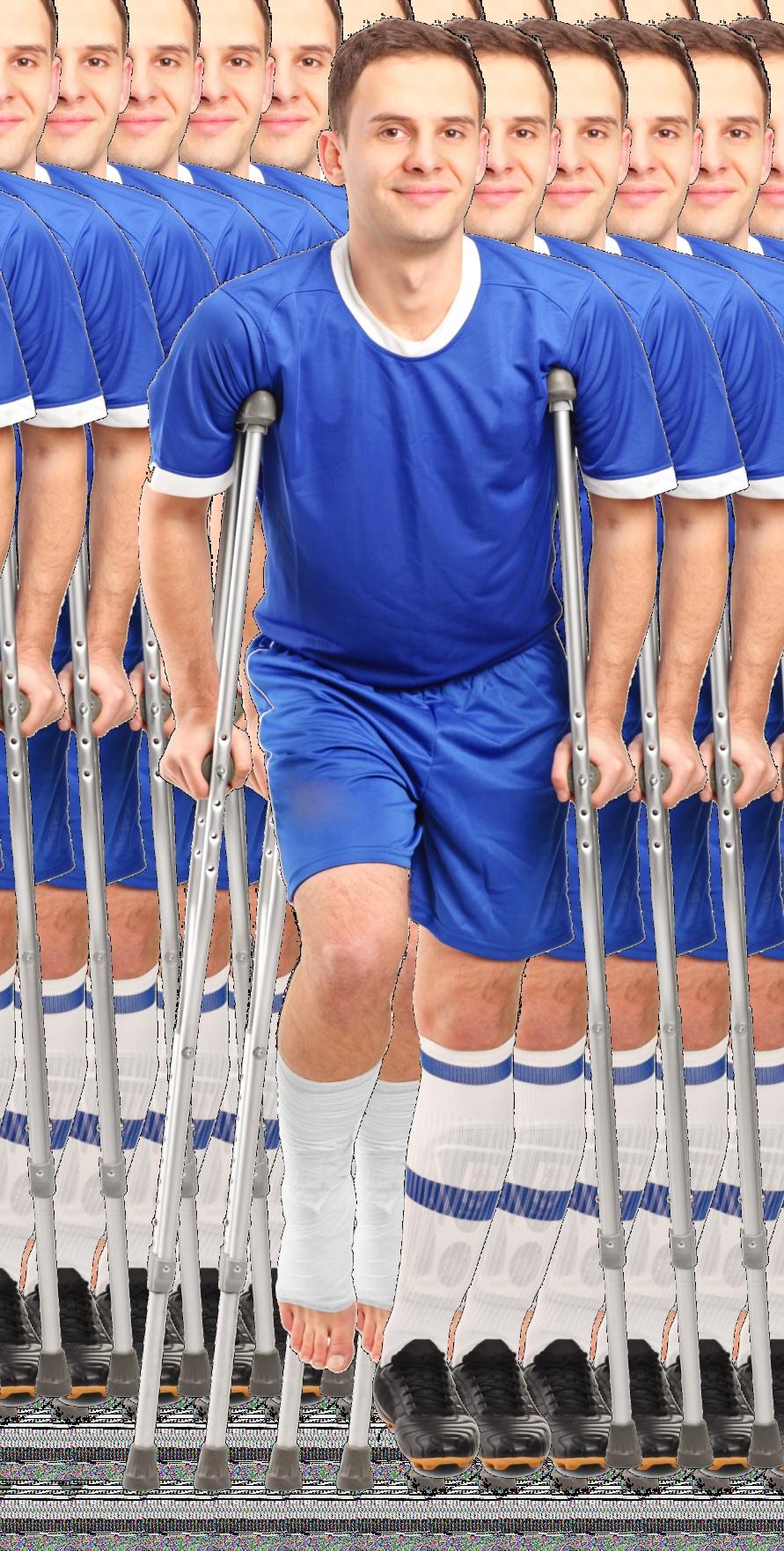
The knee is the most injured joint in both males and females with anterior cruciate ligament (ACL) injuries being one of the most significant knee injuries. Return-tosport for ACL ruptures requiring surgery usually takes a minimum of 9 months. Prolonging return-to-sport from 6 to 9 months decreases the risk of re-injury by 51% and every month prolonged beyond 8 months decreases risk by 30%. Only 12% of ACL injuries involve a contact mechanism, making the majority non-contact in nature. It has been noted that females have a higher risk of sustaining an ACL injury than their male counterparts, thus biomechanics may play a role in injury occurrence.

The purpose of this study was to compare the performance on two screening tests for ACL injury risk in male and female professional soccer players.




Sixty-seven professional soccer players (36 males and 31 females) from Brazil took part in two tests: Lower Extremity Scoring System (LESS) and Step-Down Test (SDT). For the LESS, athletes jumped forward from a 30 cm high box, landed and immediately performed a vertical jump for max height. Two familiarization trials were performed before the real trial. For the SDT, athletes performed 5 trials of an anterior and lateral step down achieving 60 ° of knee flexion. 3D motion analysis was used to capture mechanics in both sagittal and frontal plane, which was used for scoring of both tests. Scoring of the LESS was based on 17 items scoring “errors” of human movement while the SDT was based on 5 items.
No differences between groups were found on performance of the LESS: male group = 2.56 ± 1.25, female group = 2.81 ± 1.64.

No differences between groups were found for players’ performance on the SDT: male group= 2.61 ± 1.02, female group= 2.97 ± 0.95.
Female players demonstrated an increase in medial knee position (i.e. knee valgus) as well as trunk flexion position compared to males during the LESS, where males failed more often in relation to foot positioning.
LESS and SDT total scores obtained by males and females were similar, however poor alignment of the lower extremity including increased knee valgus and trunk flexion was noted in female athletes during the drop-landing. Thus, rehab and S&C professionals working with females during ACL rehab or injury prevention, should emphasize proper landing mechanics prior to plyometric based exercises. Although injuries can’t fully be prevented, movement patterns related to ACL injuries can be modified through exercise-based programming.
Rather than solely looking at the scores of the LESS and SDT performance tests, rehab professionals and S&C coaches should be more focused on the errors of human movement that led to the score as this will allow programming based on the needs of the athlete.
"The LESS and SDT are performance-based tests that can provide valuable information with regard to human movement. When working with female athletes, rather than avoiding knee valgus positioning, we should be exposing and training athletes to control these positions as it is inevitable that they will be exposed to them during sport."

"One limitation of this study is that it only included well trained soccer athletes. Future studies should look at a greater sample size of athletes at different levels of performance, which may provide valuable information regarding ACL injury risk."


